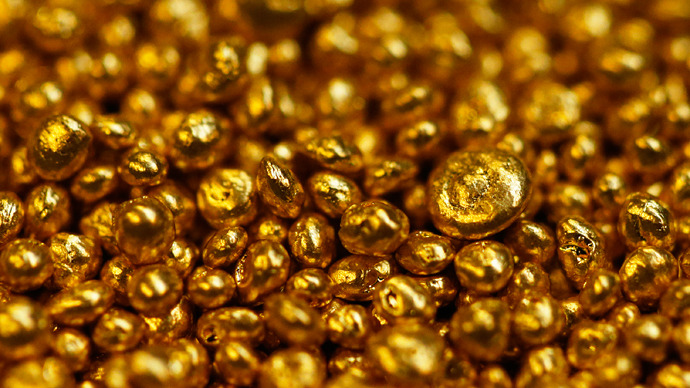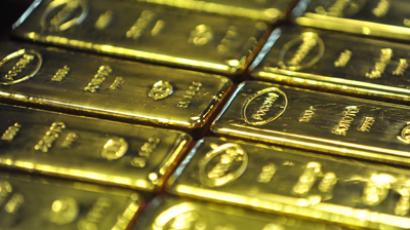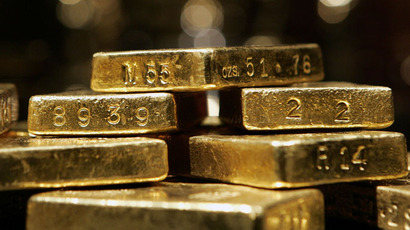Gold price set for worst 2-day loss in 30 years

Gold is headed for its biggest two-day drop in 30 years being below $1,400 per ounce for the first time since March 2011 in the wake of underwhelming Chinese growth data.
Gold posted its biggest two-day drop in 30 years closing at $1,361 on the Comex in New York on April 15. It lost 13% of its value in two sessions in the wake of underwhelming Chinese growth data.
Gold prices have generally been on the rise in the last decade. After the 2008 credit crunch investors turned to gold as the hedge. Gold peaked close to $1,900 an ounce in August 2011. However since October 2012 when the price was around $1,800 the trajectory has been downwards. Steady decline eventually led gold to a sensational drop.
Spot gold slid 6.3 percent to below $1,384.69 an ounce, dropping more than $30 in a matter of minutes at one point.
Weak data from China triggered the latest slide, after the country's economic growth rate fell unexpectedly to 7.7 percent in the first quarter putting weight on the markets. The growth was lower than market expectations for an 8.0 percent expansion, frustrating investor hopes and raising doubts about the global economy.
Slowing growth signifies that inflation looks less of a threat, reducing gold’s appeal as a store of wealth if prices are rising.
However, the US Federal Reserve is now less inclined to proceed with more quantitative easing (QE) as the economy recovers.
"What we now see is panic selling, perhaps triggered by the Fed's stimulus view. The Fed has given the signal that there's a possibility to reduce QE, and that took a lot of trust out of gold," said Dominic Schnider, an analyst at UBS Wealth Management, as cited by Reuters.
"As the Fed becomes less reflationary and the ECB not willing to end its deflationary policy, the balance towards inflation is shifting dramatically. And people recognize that in an environment where you have no inflation is a powerful driver to get out of the metal."
Gold was already suffering from a variety of factors, including a proposal Cyprus sell its gold reserves to pay off debts.
Investors ditched gold along with other precious metals. Silver was down 10 percent to $23.27 an ounce, having fallen to its lowest since October 2010 at $22.97. Spot palladium dropped 6 percent to its lowest since the begging of January at $665.75 and was then seen at $678.72, down 4.1 percent.
JPMorgan sees falling global inflation is the main factor slashing gold’s value as a sustainable hedge.
A study by JPMorgan shows that global inflation has been steadily declining since 2011, when it peaked at 4%, Bloomberg reports. JPMorgan's global consumer price index spans over 30 countries, which combined represent over 90% of world economic output.
JPMorgan suggest two possible paths events may take in the future. One is the upward trajectory for global inflation in 2013 based on forecast price trends sector by sector around the world. Another scenario prepared by the banks’ economists presumes that considering prices of commodity futures contracts, among other factors, inflation will be falling to around 2% later in 2013.















